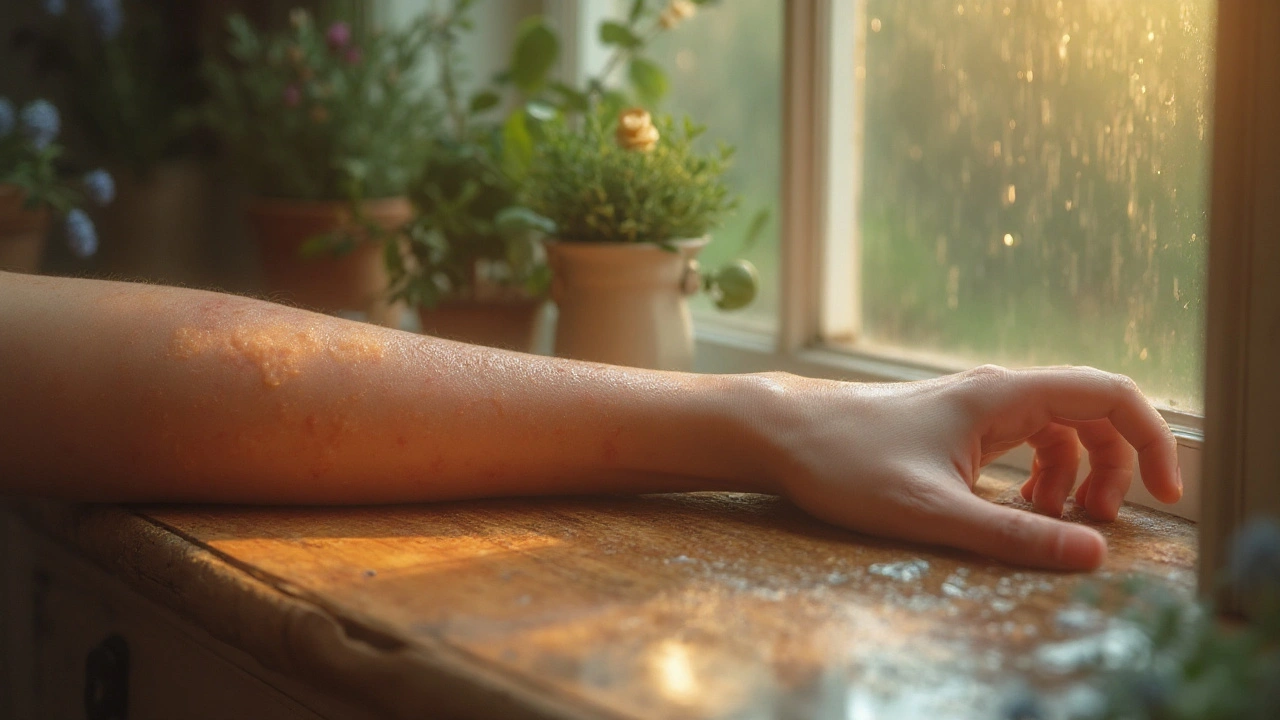Massage Benefits for Eczema – Quick Relief You Can Try Today
Ever wonder why some people with eczema swear by a gentle rubdown? It’s not just a feel‑good habit. Light massage can actually calm inflammation, boost circulation, and make itchy skin feel less angry. The trick is to keep it soft, use the right oils, and avoid anything that might irritate the skin further.
Why gentle massage can calm eczema
When you massage the skin, you increase blood flow. Better circulation means more oxygen and nutrients reach the affected area, helping the skin repair itself faster. The gentle pressure also triggers the release of endorphins, the body’s natural pain‑killers, which can lower the itch sensation. In addition, massage stimulates the lymphatic system, which helps clear out excess fluid and inflammatory cells that often build up during a flare‑up.
Simple techniques you can use at home
Start with a clean, warm environment. Wash your hands, warm a small amount of a skin‑safe oil (like coconut or jojoba), and test a drop on a small patch of skin to make sure there’s no reaction. Then, using the tips of your fingers, glide in slow, circular motions over the eczema patches. Keep the pressure light – think of a feather brushing the skin, not a firm knead.
If you have thicker plaques, try a rolling motion with your palm, moving from the center of the plaque outward. This can help break down the buildup without scraping. Limit each session to 5‑10 minutes per area; too much friction can irritate the skin instead of soothing it.
Another easy method is the “tap‑and‑hold” technique. Lightly tap the skin with the pads of your fingers for a few seconds, then hold a gentle pressure for about ten seconds. The tapping can distract the nerves from itching, while the hold encourages relaxation.
Remember to moisturize right after the massage. Seal in the oil by applying a fragrance‑free, steroid‑free cream while the skin is still slightly damp. This locks in hydration and prolongs the calming effect of the massage.
While massage can be helpful, it’s not a cure‑all. If you notice any redness, swelling, or a new rash after a session, stop immediately and talk to your dermatologist. Some eczema types are very sensitive, and even light pressure can trigger a flare‑up. Always follow the advice of your skin specialist and use massage as a complementary tool, not a replacement for prescribed treatments.
In short, a gentle massage can be a simple, low‑cost addition to your eczema routine. By improving blood flow, releasing natural pain relievers, and helping your skin stay moisturized, it tackles several of the main triggers for itching and inflammation. Try it out next time you feel a flare‑up, keep the pressure light, and see if your skin responds with a little extra calm.
How Massage Therapy Reduces Skin Inflammation and Boosts Healing
Discover how targeted massage therapy calms inflamed skin, improves circulation, and supports the body’s healing response for conditions like eczema and dermatitis.
